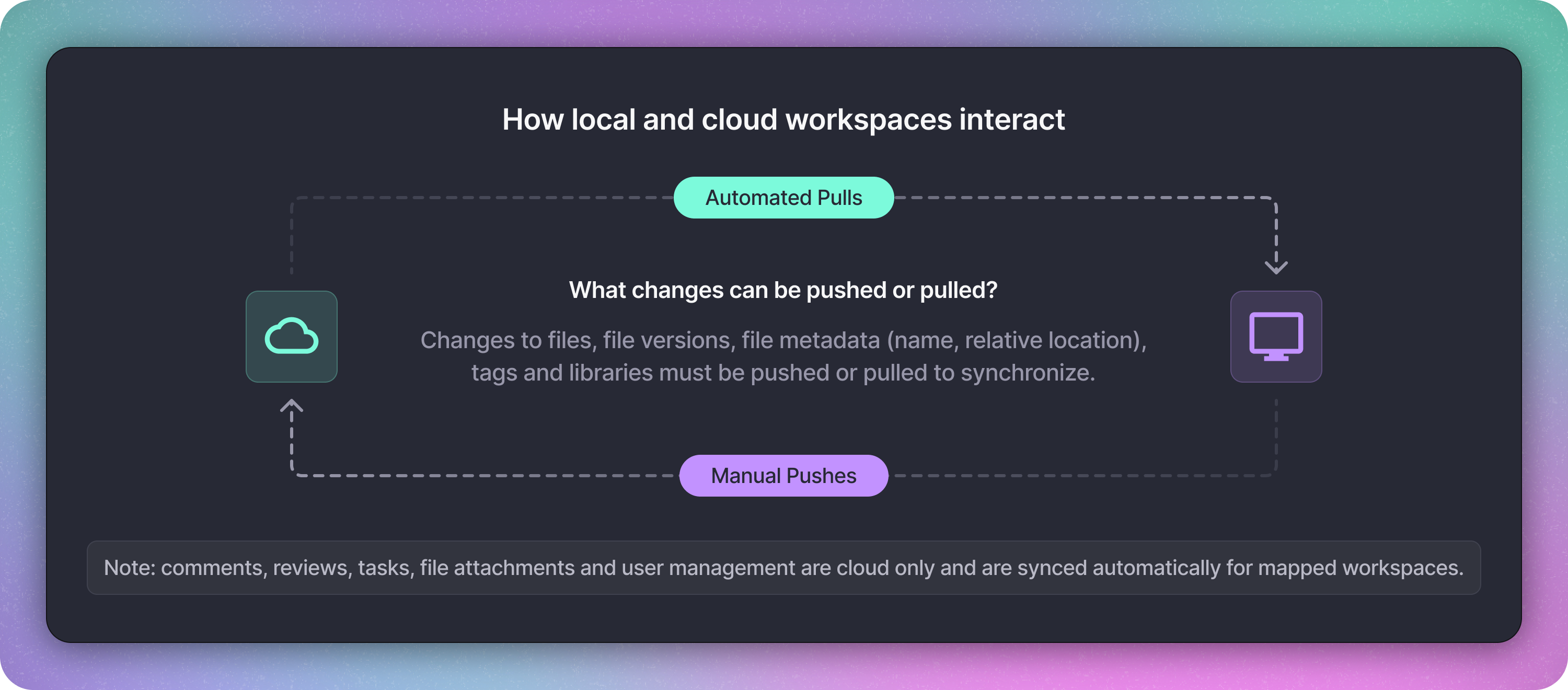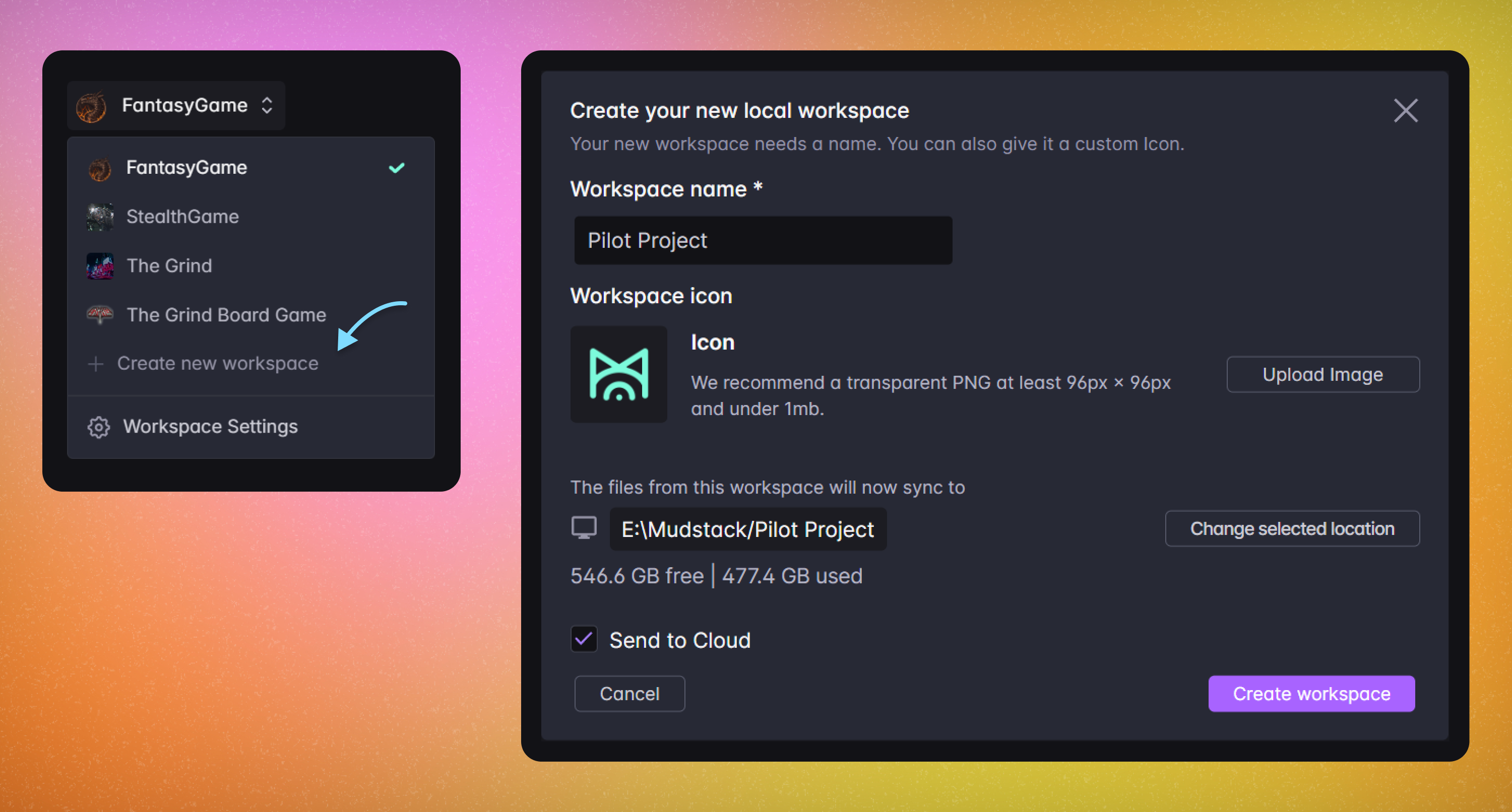- Pulling & Syncing data from the cloud to your local computer, and auto syncing files and folders, so that you’re in sync with cloud data.
- Pushing changes from your computer up to the cloud, so cloud data can stay in sync with your changes.
How Local and Cloud Workspaces Interact

- Cloud only workspace: this is a workspace that is not mapped to a local directory for the user. Indicated by a cloud icon next to the workspace name in the sidebar.
- Local only workspace: this is a workspace that is only on the user’s computer and has not been sent to the cloud. Indicated by a monitor icon next to the workspace name in the sidebar.
- Mapped workspace: this is a workspace that exists both locally and in the cloud, and can be kept in sync. Indicated by lack of an icon next to the workspace name in the sidebar.
The following data changes are immediate and will not show in the Sync
Table: Comments, Tasks, Reviews, File Activity, User management and
Attachments.
Create a Local Workspace

New Workspace below the list of workspaces in the selected account.
All workspaces need a name and workspace location. You may optionally add an icon image.
Click the
Send to Cloud checkbox to send this workspace to the cloud at
creation. This step will not send files up to the cloud, only the
workspace itself. You may see the push table count change after you send the
workspace to the cloud. Those are the changes in the workspace now available
to push.Create Workspace and the workspace will be added to the list of workspaces in that account.
Any local changes must be pushed to be available to your team on the cloud.
Mapping a Workspace
In order to synchronize data between a cloud workspace and your computer, you must first connect, ormap the cloud workspace to a designated location on your computer.
The workspace sidebar will also show a button alongside workspaces that haven’t been mapped yet— whether they are local only or cloud only.
Send an Existing Local Workspace to the Cloud

Monitor icon next to the workspace name in the left sidebar.
You will see a modal that allows you to send this workspace to the cloud and keep it in sync with your local directory.
This step will not send files up to the cloud, only the workspace itself.
You may see the push table count change after you send the workspace to the
cloud. Those are the changes in the workspace now available to push.
Map an Existing Cloud Workspace

Cloud icon next to the workspace name in the left sidebar.
You will see a modal appear. Click Select Workspace Location to choose the parent folder of the location where you want to create the local directory for the workspace.
Depending on the size of the cloud workspace, this process could take several minutes. You will see the pull count in the top right go down to zero, at which point the mapping should complete.
Unmap a Workspace

Settings > App Settings > Cloud Workspaces. From here you can click the Unsync icon for a synced workspace and confirm that you want to stop syncing.
Any files that are already synced will remain but Mudstack will stop watching this directory for changes or creating new local versions for files in this directory.
Data vs. File Syncing
When Mudstackpulls changes, it is:
- Pulling updates made by others to metadata for the selected workspace— its libraries, tags, and files (names, locations and any changes to the current version).
- Downloading only the files (and folders) that you have enabled auto syncing on.